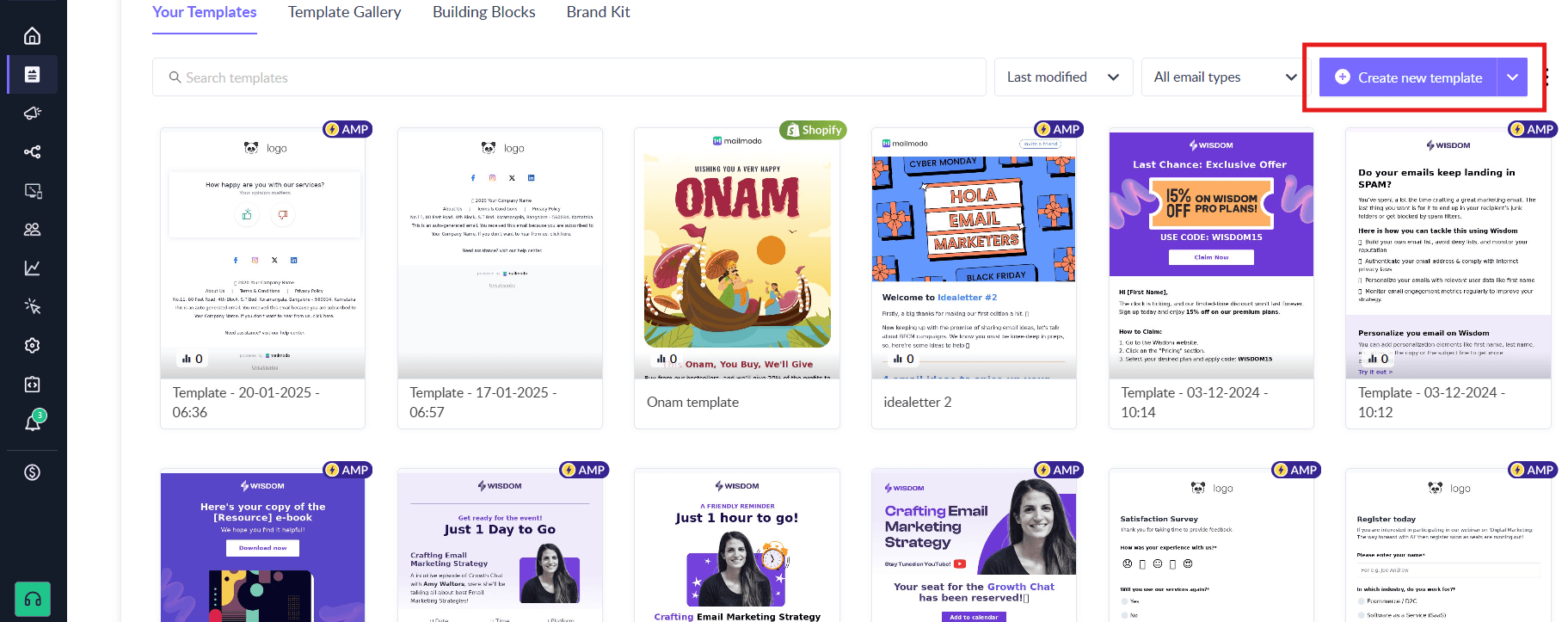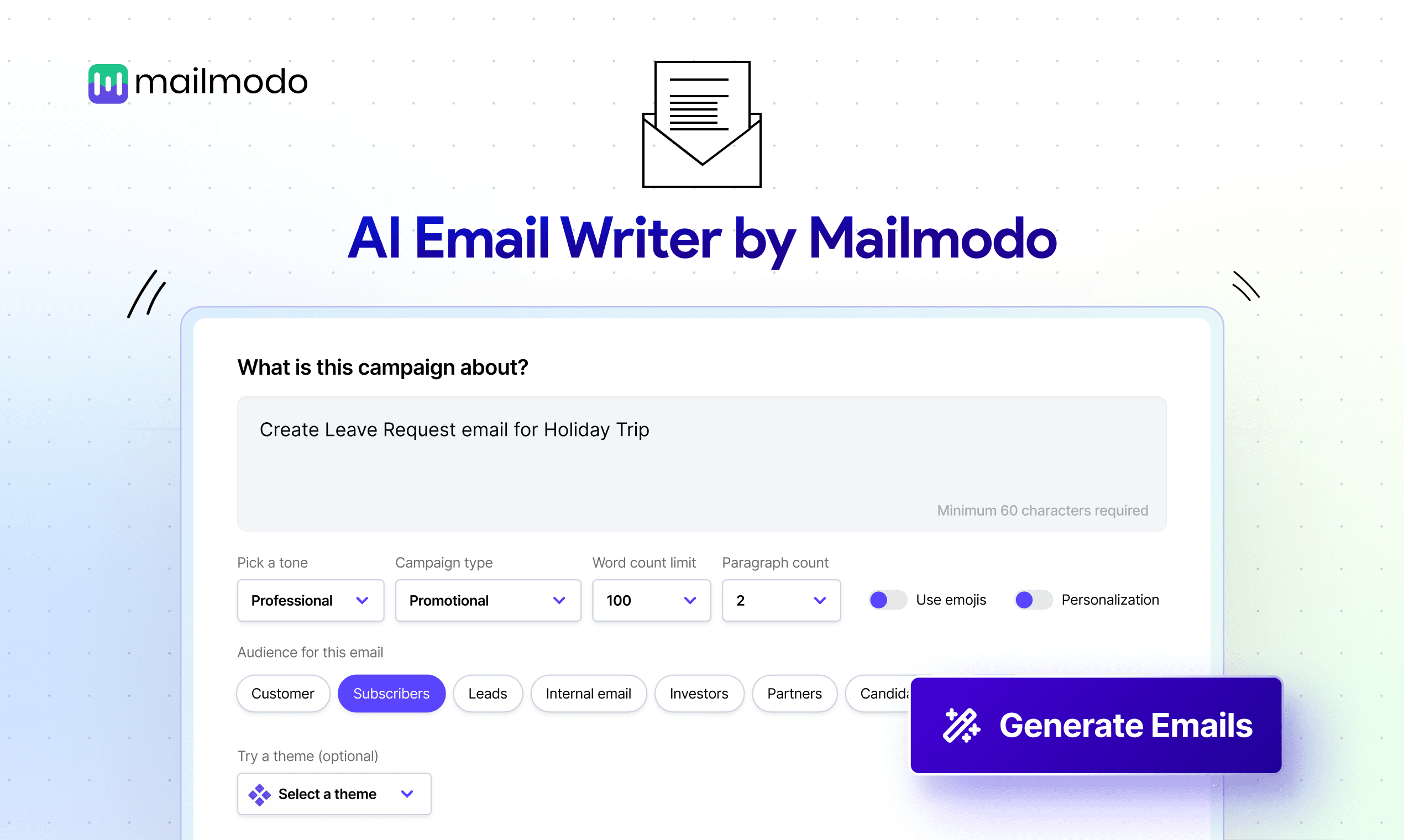What is an email service provider (ESP)?
An email service provider (ESP) is a platform that enables individuals and businesses to send emails at scale. It goes beyond basic email client functionalities by offering specialized tools for email automation, campaign management, deliverability optimization, and performance tracking.
Why do you need an email service provider?
We all know email clients allow you to send emails to anybody and anywhere in the world in the blink of an eye. So, why can't you just stick with your free Gmail or Outlook account to do email marketing, too?
Well, ESPs provide you with more features than an email client normally would to support your email marketing efforts. Here are some reasons why you need an ESP:
- Scalability: ESPs will allow you to scale your marketing efforts using email automation and send thousands of emails each day.
- Better deliverability: Many ESPs offer deliverability monitoring and reputation management tools to help ensure your emails land in inboxes rather than spam folders.
- Performance tracking: ESPs will help you track how your email campaigns are performing so you can optimize them for better ROI.
- Resource saving: ESPs provide easy-to-use tools that help you create professional-looking emails at speed. This saves both time and the cost of hiring professionals to design and send these emails.
Factors to consider when choosing an email service provider (ESP)
The best email service provider for you will depend on your unique goals, audience, and budget. But no matter your situation, there are a few key things that everyone should look out for when picking the right platform. Here’s what to keep in mind before making your decision.
1. Ease of use
When evaluating an ESP, ease of use should be at the top of your checklist. The platform should be intuitive, user-friendly, and easy to learn.
A no-code, drag-and-drop builder is essential for creating visually appealing and engaging emails without any coding. Also, look for an ESP that has an email template library. Professionally designed, customizable templates can help you create polished campaigns quickly and consistently, saving both time and effort.

2. Email list management
An ideal ESP should make it simple to manage your contacts and email lists. Look for a platform that allows you to easily import your email list and organize it without hassle.
Look for an ESP that offers advanced segmentation features let you group your audience based on multiple criteria like interests, behavior, or demographics so you can send more relevant as well as personalized messages.
Even better if the ESP supports dynamic segmentation, which automatically updates your lists in real time as the subscribers match the defined criteria.
Also, consider how the ESP handles inactive subscribers. Platforms with built-in suppression and sunset policies help you automatically filter out unengaged users.
This keeps your list clean, maintains deliverability, and ensures you're only emailing people who actually want to hear from you.
3. Email automation
Email automation helps you deliver the right message to the right person at exactly the right time, without manual effort. Choose an ESP that supports powerful automation features, such as triggered workflows for welcome emails, order confirmations, abandoned cart reminders, and more.
These messages are automatically sent based on user behavior, boosting engagement and conversions effortlessly.

4. Testing and optimization
Go for an ESP that offers A/B testing, so you can experiment with different variations of subject lines, call-to-actions, and content to see what resonates best with your audience.
Some tools even give you real time suggestions within the editor to make sure that no emails are sent with errors. Also, look for built-in smart suggestions to help improve your results over time.
5. Analytics and reporting
Look for an ESP that offers a clean, easy-to-read dashboard that tracks key metrics like open rates, click-throughs, conversions, and bounce rates.
These insights help you see what’s working, spot areas for improvement, and make smarter decisions for future campaigns.
6. Deliverability tracking
A great-looking email is useless if it never reaches the inbox. Choose a platform that offers deliverability insights, so you can monitor key metrics like bounces, spam complaints, and inbox placement across providers.
Also, make sure the ESP supports SPF, DKIM, and DMARC—these authentication protocols help protect your domain, improve your sender reputation, and reduce the chances of your emails landing in spam.
7. Budget
Choose an email service provider (ESP) that aligns with your budget and business goals. Look for transparent, easy-to-understand pricing—whether it’s based on the number of subscribers, email volume, or specific features.
Avoid platforms with hidden fees or complex pricing structures buried in the fine print.
8. Data protection and compliance
With rising privacy concerns and stricter regulations, data security is non-negotiable. Look for an ESP that supports essential email authentication protocols like DKIM, DMARC, and SPF. These help verify your identity as a sender, prevent email spoofing, and protect your subscribers from phishing attacks.
In addition, the ESP should comply with major data protection regulations such as GDPR and CCPA, and have transparent policies on how it handles customer data.
9. Integrations
Your ESP should work seamlessly with the rest of your tech stack. Whether you're using a CRM, ecommerce platform, analytics tool, or customer support software, your ESP should be able to connect without fuss.
These integrations help streamline your workflows, sync data in real time, and enable smarter automation. The smoother everything connects, the more efficient and effective your campaigns will be.

10. AI-powered features
Look for platforms that offer AI-powered tools like subject line generators to boost open rates or AI email writers that help you create personalized email copies quickly.
Mailmodo, for example, also has an email campaign generator to generate email campaigns from scratch for different use cases.

11. Customer support
Reliable customer support can make or break your experience with an ESP, especially when you run into issues mid-campaign. Go for a platform that offers responsive, round-the-clock support across multiple channels like live chat, email, or phone.
Bonus points if they assign you a dedicated account manager who understands your business and can guide you through setup, strategy, and scaling.
12. Scalability
The ESP you choose should not only meet your needs today but also scale with you as your list grows and your campaigns become more advanced.
A scalable platform should be handle increasing subscriber counts, higher email volumes, and more complex campaign flows without compromising on speed, performance, or deliverability. It should also support team collaboration as your marketing team expands—think role-based access, approval workflows, and multiple user accounts.
So, what do you choose?
Still feeling unsure about which ESP to go for? If you're looking for a platform that balances powerful features with ease of use and affordability, Mailmodo is worth considering.
It’s an all-in-one email marketing platform designed to grow with your business—whether you’re just starting out or scaling fast. Here’s a glimpse of what you get with Mailmodo:
- Send time optimization (STO): Send emails at the optimal time for each recipient.
- A/B testing: Experiment with different variations of subject lines, CTAs, and designs to optimize performance.
- Email automation: Set up automated journeys like welcome series, re-engagement emails, and cart reminders that run on autopilot.
- Email analytics: Track key metrics like open rates, click-through rates, and conversions.
- Clickmaps: Visualize user interactions and optimize email elements accordingly.
- Drag-and-drop builder: Create stunning emails effortlessly—no coding required.
- CTAs made easy: Add and customize call-to-actions to drive conversions.
Conclusion
With so many options available, choosing an ESP can be overwhelming, but understanding the key features and functionalities that matter most for your business can make the decision-making process much easier.
Whether it's ease of use, automation, segmentation, or advanced features like AI-powered tools, selecting the right ESP should align with your goals, budget, and future growth potential.
Remember, the right ESP doesn’t just help you send emails; it enables you to build lasting relationships with your audience, track performance, and optimize campaigns for better results. Happy emailing!











































